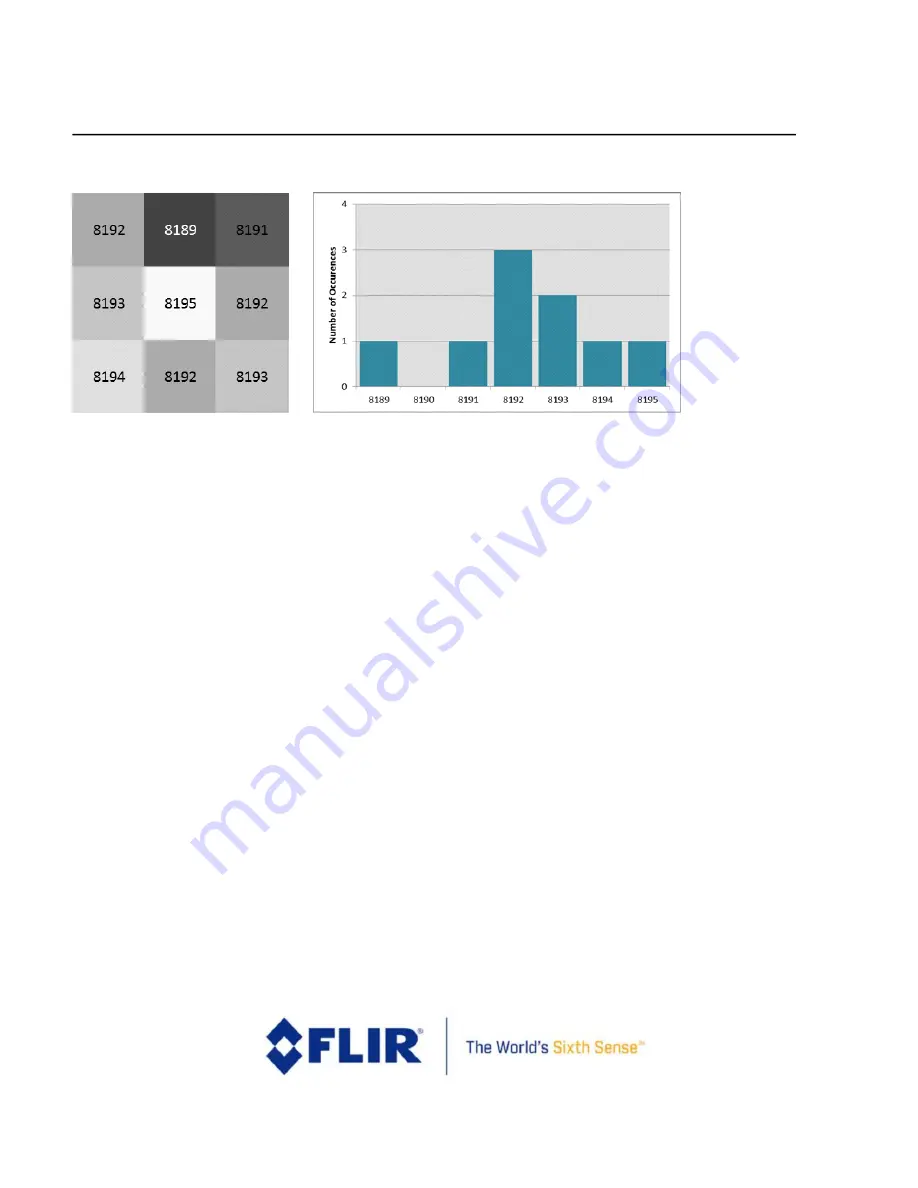
FLIR
LEPTON® Engineering Datasheet
The information contained herein does not contain technology as defined by the EAR, 15 CFR 772, is publicly available,
and therefore, not subject to EAR. NSR (6/14/2018).
Information on this page is subject to change without notice.
Lepton Engineering Datasheet, Document Number: 500-0659-00-09 Rev: 203
35
Figure 12 - Illustration of a Histogram for a 3x3 Pixel Area
Classic histogram equalization uses the cumulative histogram as a mapping function between 14-bit and 8-bit.
The intent is to devote the most gray-shades to those portions of the input range occupied by the most pixels. For
example, an image consisting of 60% sky devotes 60% of the available gray-shades to the sky, leaving only 40% for
the remainder of the image. By comparison, linear AGC “wastes”
gray-shades when there are gaps in the
histogram, whereas classic histogram equalization allocates no gray-shades to the gaps. This behavior is in
principle an efficient use of the available gray-shades, but there are a few drawbacks:
•
The resulting contrast between an object and a much colder (or hotter) background can be rendered poor
by the fact t
he algorithm “collapses” the separation between such that the object is only 1 gray
-shade
above the background. This phenomenon is illustrated in
•
Too much emphasis can be placed on background clutter, particularly when a mostly isothermal
background comprises a large fraction of the total image area. This is also illustrated in Figure 15.
•
For scenes with low dynamic range or less content, both the Linear AGC and Classic HEQ algorithms allow
the application of a high amount of gain to the histogram, resulting in more contrast but increasing noise.
The Lepton AGC algorithm is a modified version of classic histogram equalization that mitigates these
shortcomings. One such modification is a parameter called “clip limit high.” It clips the maximum population of
any single bin, limiting the influence of heavily populated bins on the mapping function. Another parameter
utilized by the Lepton algorithm is called “clip limit low.” It adds a constant value to every n
on-zero bin in the
histogram, resulting in additional contrast between portions of the histogram separated by gaps.
is an
example showing the benefit of the Lepton clip parameters.
















































